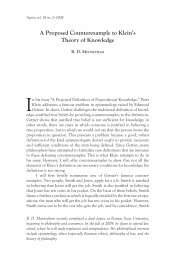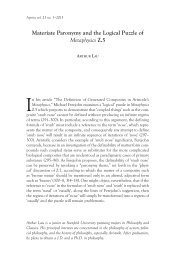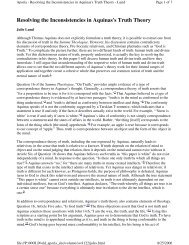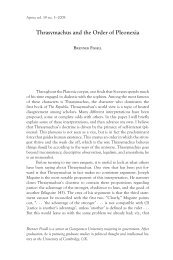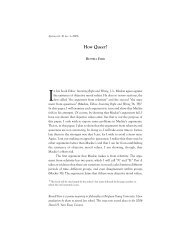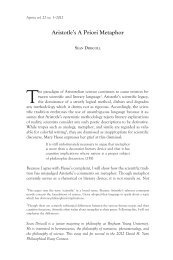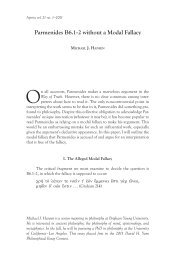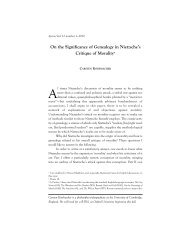Hermeneutics after Kant - Aporia - Brigham Young University
Hermeneutics after Kant - Aporia - Brigham Young University
Hermeneutics after Kant - Aporia - Brigham Young University
You also want an ePaper? Increase the reach of your titles
YUMPU automatically turns print PDFs into web optimized ePapers that Google loves.
80<br />
Nate NoorlaNder<br />
according to its interpretation of itself at a particular time. Here the interpretive<br />
aspect within Heidegger’s model for understanding begins to show<br />
itself. Heidegger’s notion of “world” will complete the interpretive model<br />
of understanding.<br />
Being-in-the-World<br />
For Heidegger the term “world” is basically equivalent to what we<br />
refer to when we say “the world of sports” or “the world of women.” As<br />
they’re inhabited, worlds such as family life, work life, and religious life<br />
organize and give meaning to Dasein’s surroundings and its dealings with<br />
them. They provide a framework within which things can show up to Dasein<br />
in certain ways. Heidegger contends that Dasein’s world must already<br />
be in place for physical entities to show up at all. What is a vehicle, for<br />
example, apart from the need to get here or there, which need exists within<br />
Dasein’s world? “Such an entity can ‘meet up with’ Dasein only in so far<br />
as it can, of its own accord, show itself within a world” (Heidegger 84). In<br />
this way each aspect of Dasein’s experience has meaning only in relation<br />
to its world.<br />
Dasein is necessarily based in this kind of world. Heidegger says, “to<br />
Dasein, Being in a world is something that belongs essentially. Thus Dasein’s<br />
understanding of Being pertains with equal primordiality both to an<br />
understanding of something like a ‘world’ and to the understanding of the<br />
Being of those entities which become accessible within the world” (33).<br />
In other words, Dasein grasps both its world and the being of the entities<br />
within it. Its understanding of the being of those entities depends on its<br />
understanding of this very world in which they show up. A hammer, for example,<br />
might show up as a toy or a weapon in a world that has no need for<br />
hammers, or it might not show up at all. There is nothing within the wooden<br />
shaft or metal head that can be called a “hammer” irrespective of its<br />
context. Thus all existence is an interpretation. In Heidegger’s words:<br />
In interpreting, we do not, so to speak, throw a “signification”<br />
over some naked thing which is present-at-hand,<br />
we do not stick a value on it; but when something within-the-world<br />
is encountered as such, the thing in question<br />
already has an involvement which is disclosed in our<br />
understanding of the world, and this involvement is one<br />
which gets laid out by the interpretation. (190–91)<br />
In such a world, the notion of “subjectivity” as Schleiermacher understood<br />
it does not make sense. How could one possibly be cut off from



